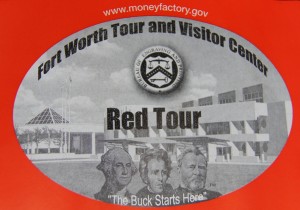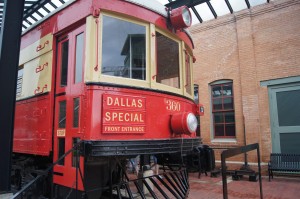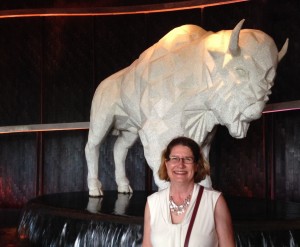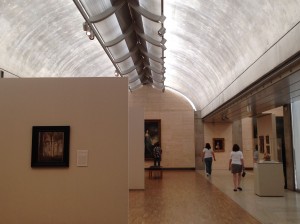Dallas is home of three great aquariums — SeaLife Grapevine, Dallas World Aquarium, and Children’s Aquarium at Fair Park. At first blush, three separate aquariums may seem excessive until you realize each offers a completely different marine experience.
SeaLife Grapevine — Best Date Night
SeaLife Grapevine is the newest aquarium attraction to open in the Dallas Metroplex. Owned and operated by Merlin Entertainment, SeaLife Grapevine is one of over two 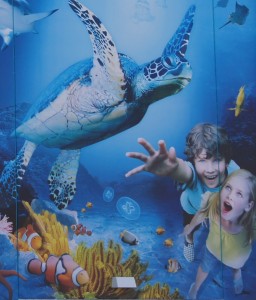 dozen SeaLife attractions world-wide, with most located in Europe. Across from LegoLand, also owned and operated by Merlin Entertainment, SeaLife is situated inside Grapevine Mills Mall.
dozen SeaLife attractions world-wide, with most located in Europe. Across from LegoLand, also owned and operated by Merlin Entertainment, SeaLife is situated inside Grapevine Mills Mall.
Despite its limited size, the aquarium entertains visitors with a variety of exhibits and tanks artfully constructed to look bigger than they are. Sea Life is a two-story facility allowing visitors to figuratively walk on water at the shark walk exhibit. Actually, it’s an acrylic floor with sharks and rays swimming in a tank beneath your feet – a novel change to the typical shark tunnel.
In addition to sharks and rays, SeaLife exhibits include coral reefs, touch tanks, jelly fish and sea horses. In fact, SeaLife prides itself on its successful sea horse breeding program. Honoring its location, SeaLife also has an exhibit dedicated to Texas wetlands and fish.
Don’t miss. Fin Facts painted on aquarium walls educate visitors with interesting factoids about the aquarium’s residents. Study well, as quiz stations located throughout the exhibits will check your knowledge. It’s a fun way to learn more about the animals.
Details. SeaLife Grapevine (3000 Grapevine Mills Parkway, Grapevine) is open later than most aquariums. Visitors can see the fish Monday through Saturday until 7:30 p.m., and Sunday until 5:30 p.m. Tickets online begin at $15 for adults and $12 for children. A combined SeaLife/LegoLand ticket is also available.
The Dallas World Aquarium (DWA) — Best for Out-Of-Town Visitors
Calling the DWA an aquarium is a misnomer. This unique attraction is part aquarium, part zoo and part South American adventure. Housed in a refurbished warehouse in the historic West End, the DWA may be best known for its indoor rain forest exhibit called Orinoco – Secrets of the River. Complete with 40-foot waterfall, visitors begin their journey at the rain forest canopy and travel downward to the “river” below. Birds nest in the tree tops and habitats for other rain forest animals are situated along the walkway. A favorite is the sloth who hangs out near the Jungle Café.
A large, underwater viewing area provides a look at fish that populate the Orinoco and an opportunity to see the DWA’s Antillean Manatees, an endangered species. In addition to the unique South American rain forest experience, DWA has the standard aquarium exhibits of clown fish, sea horses and jelly fish. There are sharks, too. A 40-foot clear tunnel allows visitors to see sharks swim overhead. Other exhibits include penguins, flamingos and even a hallway with nocturnal animals like bats and opossums.
Don’t miss. On weekends the Mayan Performance Troupe performs traditional Mayan dances near the jaguar enclosure in the Mundo Maya exhibit.
Details. DWA (1801 N. Griffin St., Dallas) is open daily from 10 a.m. to 5 p.m. Tickets are $20.95 for adults and $12.95 for children. There are two restaurants located within DWA and both are worth a visit. The Café Maya affords diners a view of the rainforest and serves Mexican cuisine. Eighteen O One is located on the ground floor (no view) with an Asian inspired menu, and a kid-favorite, fish-shaped pizza.
Children’s Aquarium at Fair Park — Best for a Birthday Party
No more standing on tiptoes to see the fish for youngsters at the Children’s Aquarium. The aquarium’s recent renovation included installation of viewing windows and exhibits at child-friendly heights. The aquarium’s touch tank is strategically positioned in the entrance foyer where a docent guides children and parents. Here kids can see the underside of a horseshoe crab or touch a slipper lobster.
The smallest of the three Dallas area aquariums, it is also the most affordable with tickets for adults $8 and children $6. The aquarium’s size is a plus for the littlest marine biologists who can become overwhelmed by crowds at larger aquariums. A newly refurbished party room is an ideal location for children’s birthday celebrations. The aquarium offers weekend party packages, which include an animal interpreter and stingray feeding. For more information contact the aquarium at (469) 554-7549.
Don’t miss. Stingray Bay is a covered, outdoor exhibit that includes a shark tank, and stingray touch tank. Velvety smooth to the touch, the southern stingray seem to enjoy their encounters with humans. For a nominal fee you can feed the rays, too.
Details. The Children’s Aquarium at Fair Park (1462 First Avenue, Dallas) is open seven days a week from 9 a.m. to 4:30 p.m.

